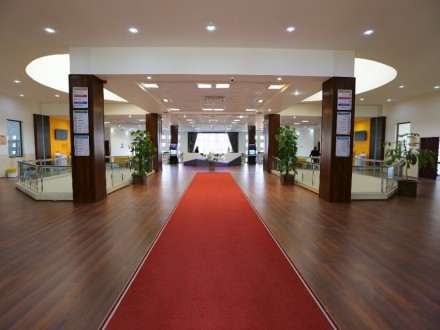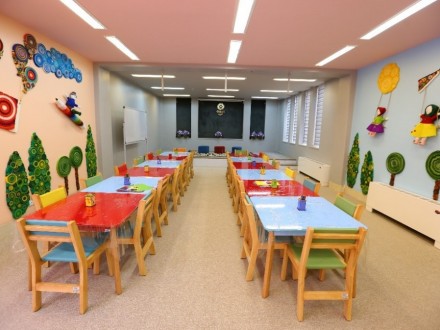Introduction to Yazd Central Library, Iran
15 May 2021

During the recent organisation of the Public Libraries in the Islamic Republic of Iran, a major movement has been started to properly equip the central public libraries with a focus on the following areas – spatial arrangement, equipment, facilities, segmentation and user spaces. Various national and international models, including their library equipment and services, were studied and examined as part of the planning process.
Yazd Central Library is one of these libraries and was launched on 6 March 2021 with an infrastructure of 8,000 square metres and a capacity of 200,000 copies of books in various sections. This launch date coincided with the anniversary of the establishment of the Iran Public Libraries Foundation. The distinctive features of this library include: anticipating the need for new spaces and functions in the library, reviewing the design and equipment of the library, allocating skilled and specialised manpower, and standardising the internal equipment. With the opening of the Central Library of Yazd, the number of central public libraries in Iran reached 10.

Some of the other remarkable features of this library are:
A) Furnished with modern technologies and equipment:
The central library is equipped with high-speed internet on optical fibre platform.
All equipment and facilities of this library have been selected through various processes with expertise and consideration for the needs of users e.g. tables fitted with electrical outlets, ergonomic chairs, information stands, etc.
The children’s section of the library, which is one of the largest in the country, was designed by the librarians of the children’s section with an attractive atmosphere for children and young people. A playroom, a training class and a play stage are part of this section, along with the bookstack and the nursery room.

Due to the Corona virus pandemic and the impossibility of attending or visiting libraries, a “Virtual Tour of Yazd Central Library” has been made available (http://sarasarnama.com/cms/iranpl/view.php?id=MTYzOA==) with the aim of acquainting knowledge and information science specialists, the general public and anyone else who could be interested with the different sections and facilities of this library.
Setting up a science room with an area of 300 square metres for teenagers, in cooperation with knowledge-based companies, focusing on education, creativity, entertainment and familiarity with science using interactive and experimental equipment. This is a novel and distinctive feature of Yazd Central Library.
Some library spaces will be put into operation in the near future. These include the workshop space, audio book recording studio, amphitheatre, book café, book exchange centre, warehouse and commercial spaces.
B) Designing an environment in accordance with the traditional context of Yazd
Yazd is a historical city with a unique cultural, architectural and Islamic context. Since the library is located in the historic district, the architecture and exterior view of the library is modelled on the traditional context and history of Yazd. Likewise, designing space has been done using local and cultural patterns of the city.
Space creation, division of user spaces and partitioning different sections of the library building have been done based on recognised standards and with an emphasis on maximum use of library spaces.
C) Considering the needs of all groups of users
A variety of audio-visual resources for all people, including the deaf, the blind and other members of the society make this library a comprehensive centre in terms of audio-visual services.
In dividing the spaces and creating different sections for the library, the principle of easy access for all visitors to the spaces and services of the library has been observed.
Currently, Yazd Central Library has various dedicated sections including the following: print repository, children, adolescents, publications, science, the blind, the deaf, manuscripts, lithography and lead printing, classrooms, computer-based classroom, study halls, researchers hall, group study room , gallery, VIP study rooms, conference hall, and database management.
The “special groups” section of the library has been prepared for the benefit of the blind and deaf by using specialised equipment and facilities to actively encourage the attendance of these groups in the library. Consultations have been held with Welfare Organizations and affiliated associations for more activities and expansion of these sections.